

Categories
New products
-
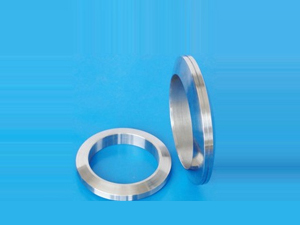
Lens Ring Joint Gasket
With professional Lens Ring Joint Gasket factory, Ningbo Kaxite Sealing Materials Co.,Ltd is one of the leading China Lens Ring Joint Gasket manufacturers and suppliers.
-
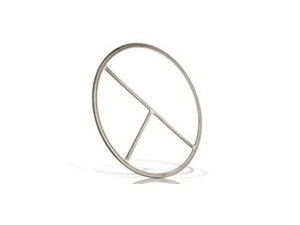
Double Jacket Gasket
With professional Double Jacket Gasket factory, Ningbo Kaxite Sealing Materials Co.,Ltd is one of the leading China Double Jacket Gasket manufacturers and suppliers.
-
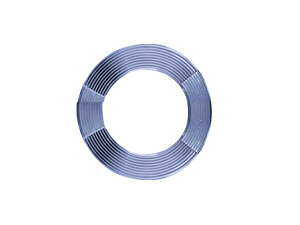
Corrugated Gaskets
With professional Corrugated Gaskets factory, Ningbo Kaxite Sealing Materials Co.,Ltd is one of the leading China Corrugated Gaskets manufacturers and suppliers.
-
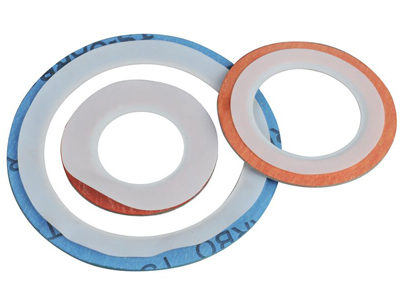
PTFE Envelope Gasket
With professional PTFE Envelope Gasket factory, Ningbo Kaxite Sealing Materials Co.,Ltd is one of the leading China PTFE Envelope Gasket manufacturers and suppliers.
-
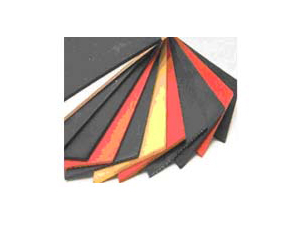
Rubber Sheet
With professional Rubber Sheet factory, Ningbo Kaxite Sealing Materials Co.,Ltd is one of the leading China Rubber Sheet manufacturers and suppliers.
Gasket Properties
HIT:35 DATE:2015/3/25
Gaskets are normally made from a flat material, a sheet such as paper, rubber, silicone, metal, cork, felt, neoprene, nitrile rubber, fiberglass, polytetrafluoroethylene (otherwise known as PTFE or Teflon) or a plastic polymer (such as polychlorotrifluoroethylene).
One of the more desirable properties of an effective gasket in industrial applications for compressed fiber gasket material is the ability to withstand high compressive loads. Most industrial gasket applications involve bolts exerting compression well into the 14 MPa (2000 psi) range or higher. Generally speaking, there are several truisms that allow for best gasket performance. One of the more tried and tested is: "The more compressive load exerted on the gasket, the longer it will last".
There are several ways to measure a gasket material's ability to withstand compressive loading. The "hot compression test" is probably the most accepted of these tests. Most manufacturers of gasket materials will provide or publish the results of these tests.
Gasket design
Gaskets come in many different designs based on industrial usage, budget, chemical contact and physical parameters:
Sheet gaskets
The premise is simple in that a sheet of material has the gasket shape "punched out" of it. This leads to a very crude, fast and cheap gasket. In previous times the material was compressed asbestos, but in modern times a fibrous material such as high temp graphite is used. These gaskets can fill many chemical requirements based on the inertness of the material used and fit many budgetary restraints. Common practice prevents these gaskets from being used in many industrial processes based on temperature and pressure concerns.
Solid material gaskets
The idea behind solid material is to use metals which cannot be punched out of sheets but are still cheap to produce. These gaskets generally have a much higher level of quality control than sheet gaskets and generally can withstand much higher temperatures and pressures. The key downside is that a solid metal must be greatly compressed in order to become flush with the flange head and prevent leakage. The material choice is more difficult; because metals are primarily used, process contamination and oxidation are risks. An additional downside is that the metal used must be softer than the flange — in order to ensure that the flange does not warp and thereby prevent sealing with future gaskets. Even so, these gaskets have found a niche in industry.
Spiral-wound gaskets
Spiral-wound gaskets comprise a mix of metallic and filler material. Generally, the gasket has a metal (normally carbon rich or stainless steel) wound outwards in a circular spiral (other shapes are possible) with the filler material (generally a flexible graphite) wound in the same manner but starting from the opposing side. This results in alternating layers of filler and metal. The filler material in these gaskets acts as the sealing element, with the metal providing structural support.
These gaskets have proven to be reliable in most applications, and allow lower clamping forces than solid gaskets, albeit with a higher cost. [2]
Constant seating stress gaskets
The constant seating stress gasket consists of two components; a solid carrier ring of a suitable material, such as stainless steel, and two sealing elements of some compressible material installed within two opposing channels, one channel on either side of the carrier ring. The sealing elements are typically made from a material (expanded graphite, expanded polytetraflouroethylene (PTFE), vermiculite, etc.) suitable to the process fluid and application. Constant seating stress gaskets derive their name from the fact that the carrier ring profile takes flange rotation (deflection under bolt preload) into consideration. With all other conventional gaskets, as the flange fasteners are tightened, the flange deflects radially under load, resulting in the greatest gasket compression, and highest gasket stress, at the outer gasket edge.
Since the carrier ring used in constant seating stress gaskets take this deflection into account when creating the carrier ring for a given flange size, pressure class, and material, the carrier ring profile can be adjusted to enable the gasket seating stress to be radially uniform across the entire sealing area. Further, because the sealing elements are fully confined by the flange faces in opposing channels on the carrier ring, any in-service compressive forces acting on the gasket are transmitted through the carrier ring and avoid any further compression of the sealing elements, thus maintaining a 'constant' gasket seating stress while in-service. Thus, the gasket is immune to common gasket failure modes that include creep relaxation, high system vibration, or system thermal cycles. The fundamental concept underlying the improved sealability for constant seating stress gaskets are that
(i) if the flange sealing surfaces are capable of attaining a seal,
(ii) the sealing elements are compatible with the process fluid and application, and
(iii) the sufficient gasket seating stress is achieved on installation necessary to affect a seal, then the possibility of the gasket leaking in-service is greatly reduced or eliminated altogether.
Double-jacketed gaskets
Double-jacketed gaskets are another combination of filler material and metallic materials. In this application, a tube with ends that resemble a "C" is made of the metal with an additional piece made to fit inside of the "C" making the tube thickest at the meeting points. The filler is pumped between the shell and piece. When in use the compressed gasket has a larger amount of metal at the two tips where contact is made (due to the shell/piece interaction) and these two places bear the burden of sealing the process. Since all that is needed is a shell and piece, these gaskets can be made from almost any material that can be made into a sheet and a filler can then be inserted. This is an effective option for most applications.
Kammprofile gaskets
Kammprofile gaskets are used in many older seals since they have both a flexible nature and reliable performance. Kammprofiles work by having a solid corrugated core with a flexible covering layer. This arrangement allows for very high compression and an extremely tight seal along the ridges of the gasket. Since generally the graphite will fail instead of the metal core, Kammprofile can be repaired during later inactivity. Kammprofile has a high capital cost for most applications but this is countered by long life and increased reliability.
Flange gasket
Copper flange gaskets used for ultrahigh vacuum systems
A flange gasket is a type of gasket made to fit between two sections of pipe that are flared to provide higher surface area.
Flange gaskets come in a variety of sizes and are categorized by their inside diameter and their outside diameter.
There are many standards in gasket for flanges of pipes. The gaskets for flanges can be divided in major 4 different categories:
1.Sheet gaskets
2.Corrugated metal gaskets
3.Ring gaskets
4.spiral wound gaskets
Sheet gaskets are simple, they are cut to size either with bolt holes or without holes for standard sizes with various thickness and material suitable to media and temperature pressure of pipeline.
Ring gaskets also known as RTJ. They are mostly used in offshore oil- and gas pipelines and are designed to work under extremely high pressure. They are solid rings of metal in different cross sections like oval, round, octagonal etc. Sometimes they come with hole in center for pressure .
Spiral wound gaskets are also used in high pressure pipelines and are made with stainless steel outer and inner rings and a center filled with spirally wound stainless steel tape wound together with graphite and PTFE, formed in V shape. Internal pressure acts upon the faces of the V, forcing the gasket to seal against the flange faces.